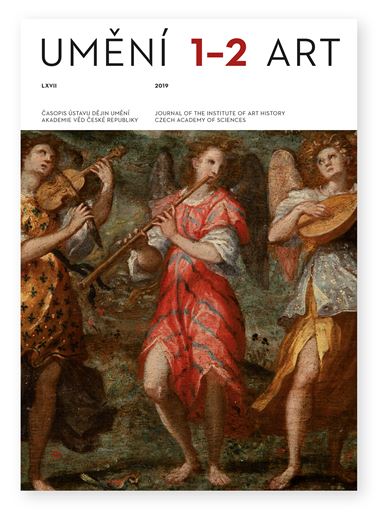Petr Šámal
Necudní naháči z řeckého Olympu. Nahé tělo v architektonickém dekoru Prahy 19. a počátku 20. století
The naked human body is one of the classical but controversial themes in art. This text deals with its use in the decoration of architecture. Depiction of the naked body has been the subject of many theoretical studies, but in these the decoration of buildings has been wrongfully neglected. It nevertheless represented an important basis for the cultivation of nude figures and their confrontation with the wider public, especially in urban building in the second half of the 19th and first half of the 20th centuries.The text investigates the gradual inclusion of ‘nude statues’ (i.e. unclothed or partly clothed figures) in the architecture of Prague. Public buildings played an important part in this process, but it was tenement buildings that became the main platform for naked figures. The article seeks the reasons for their profusion and finds them in the combination of iconographic traditions, the developing cult of the body and art-technological causes. It handles the effort to censor naked statues exceeding conventions not only from the viewpoint of the nudity per se, but also from the viewpoint of gender customs: the depiction of the naked female body had a strong tradition, but this was not the case for the male body and in the case of the combination of the bodies of both genders; in the analysis of their viewing it is also essential to take into consideration the gender of the onlookers — the passers-by. Although nude statues became a normal part of Prague around 1900, at this time there was an intervention in the appearance of the naked male figures on the façade of the Main Station; the enforced replacement of genitalia by fig leaves was due to the gender factors mentioned. Nude statues had their political connotations, which appeared with the arrival of the Young Czech Partyat the head of the Prague municipality (1906), when changes took place in the attitude to naked statues on public architecture. Even in 1925, however, the figures on the façade of the State Medical Institute had to be altered due to their nudity at the instigation of a clerically-minded minister and their case was used in the pre-election struggle. Due to nude statues in the decoration of buildings, interventions took place in cultural models of the time which contributed to changes in the perception of the depiction of the naked human body in art.
Petr Šámal: samal@ucl.cas.cz
Full-text in the Digital Library of the Czech Academy of Sciences:
https://kramerius.lib.cas.cz/uuid/uuid:9649245e-206c-42dc-bdc1-806c4e6b4c63
< back

